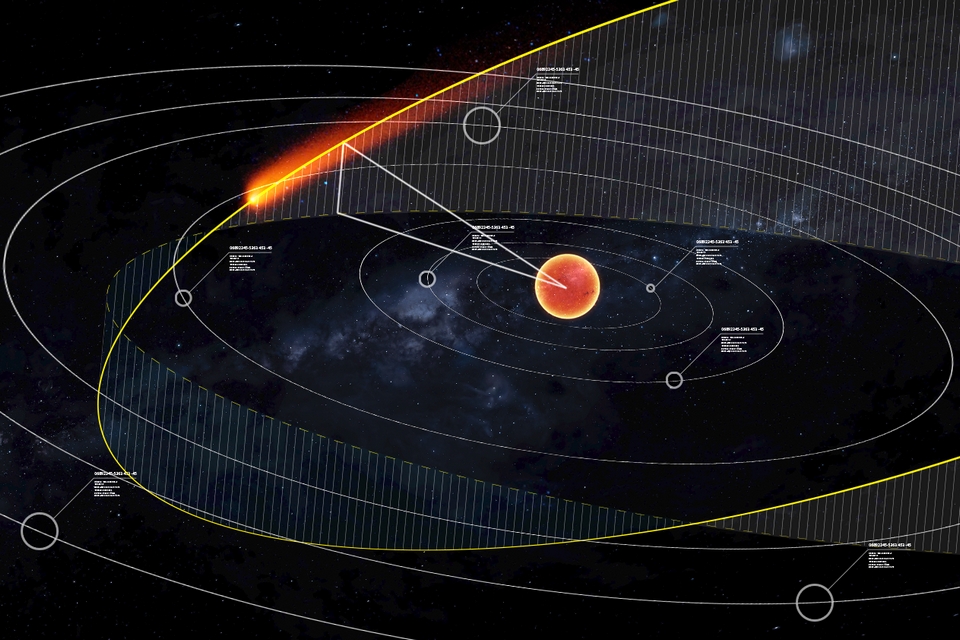At the beginning of September 2023, the night sky is adorned by Comet Nishimura. It was discovered on August 12, just a month before its closest approach to Earth. In fact, this is a relatively late discovery. Usually, scientists learn about the approach of “tailed stars” much earlier thanks to a large number of sensitive telescopes.

1. What are comet orbits like?
Comets, like planets, move around the Sun in their own orbits. However, for most “tailed stars,” these orbits are highly elongated ellipses. They have a point on their orbit closest to the Sun (perihelion), where we mainly see them, and a point farthest from the Sun (aphelion).
Comets that come to us from other star systems (only two of which are currently known) move along hyperbolic orbits. This means they have no aphelion, only perihelion, after passing which they permanently leave the gravitational sphere of our star.
Only a small portion of comets have orbits close to circular. Typically, they revolve in the Asteroid Belt.
2. How do scientists find out where a new comet is headed?
Comets are constantly and consistently sought in the night sky. Every night, hundreds of astronomers photograph the celestial dome searching for nebulous objects that weren’t there before. Each of these could turn out to be a new comet. By observing how it changes its position among the stars, scientists determine the parameters of its orbit.
Considering that the orbit must be an ellipse or a parabola with the Sun at the focus, this is not difficult. A few weeks of observation are often enough to calculate when and at what distance the comet will pass perihelion, approach Earth, or return to the Sun.
3. What are short-period comets?
Comets with periods shorter than 200 years are called short-period comets. They usually return to the Sun every few years or decades. A significant portion of them belongs to the Jupiter family and has a rotation period of less than 20 years. Typically, their passages through the inner regions of the Solar System are accurately calculated decades in advance.
Comets with rotation periods in the range of decades fly far beyond the orbits of Uranus and Neptune. It’s with them that the most interesting feature of comet orbits is fully observed. According to the laws of celestial mechanics, they cover the part of their trajectory closest to the Sun very quickly, while moving extremely slowly near aphelion.
4. When will Comet Halley return?
Comet Halley is a bright short-period comet that returns to the Sun every 75-76 years. Thanks to its visibility to the naked eye in practically every appearance, it has been observed by humans since ancient civilizations. The regularity of the return of the “tailed star” allowed Edmund Halley to speculate that it’s the same celestial object and predict its next appearance in 1758.
The last time Comet Halley approached the Sun was in 1986. It was studied using both ground-based telescopes and spacecraft. However, after that, it moved away from the center of the Solar System and is currently far beyond Neptune’s orbit. In December of this year, it will reach aphelion. It will return again in 2061.
5. How accurately can scientists predict comet returns?
The orbits of comets with the shortest periods can be determined well in advance with high precision due to their regular observations. Additionally, in their case, the gravitational impact of large planets can be calculated much more accurately. However, objects with rotation periods of decades, centuries, or even thousands of years are mostly invisible to us most of the time, and during this time, the gravity of other celestial bodies can significantly alter their orbits.
The orbit of Comet Halley around the Sun can actually be 74 or 79 years. The periodicity of comets that fly far into the Oort Cloud is known with very low accuracy, so we can make mistakes in predicting their return times by years or decades.
